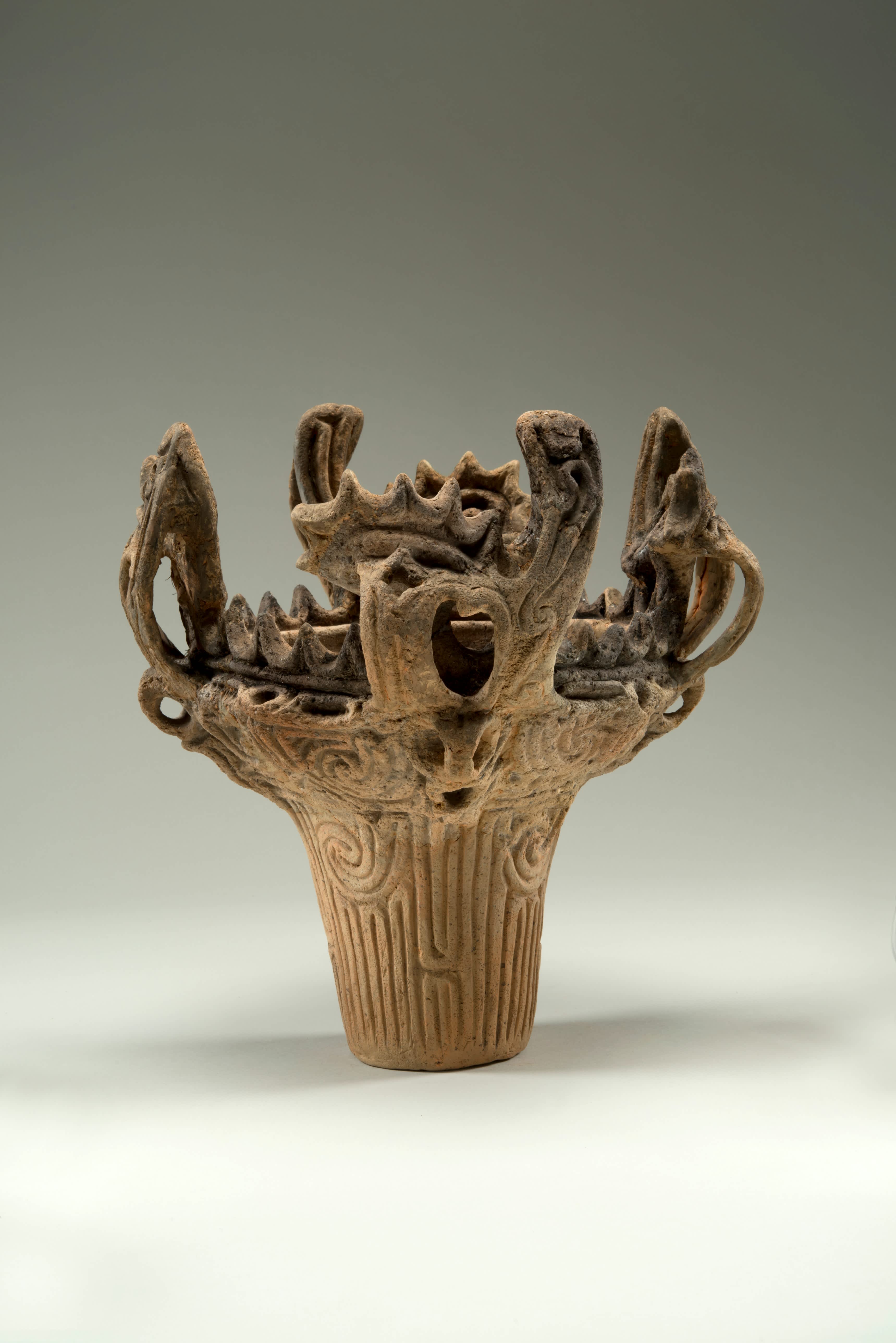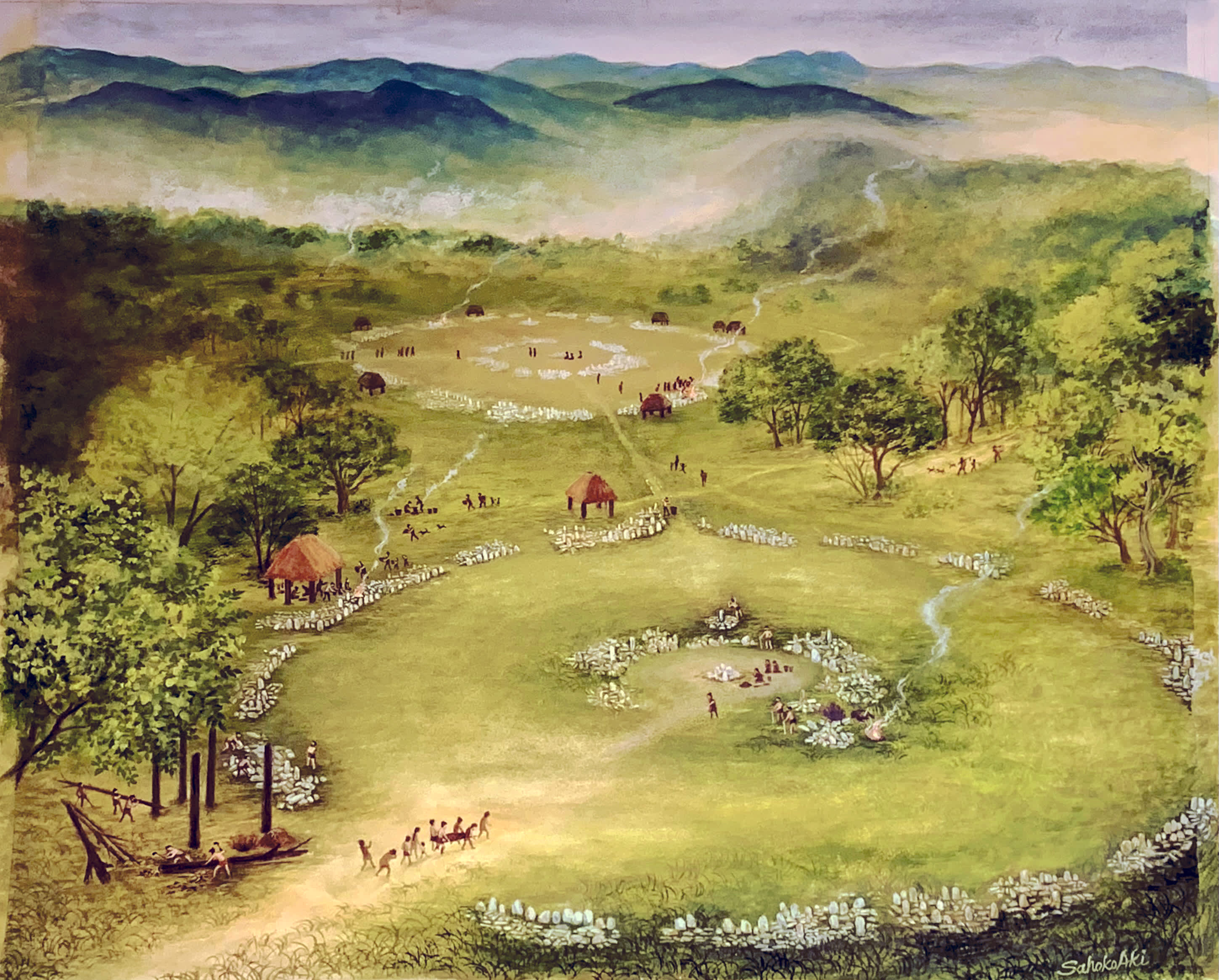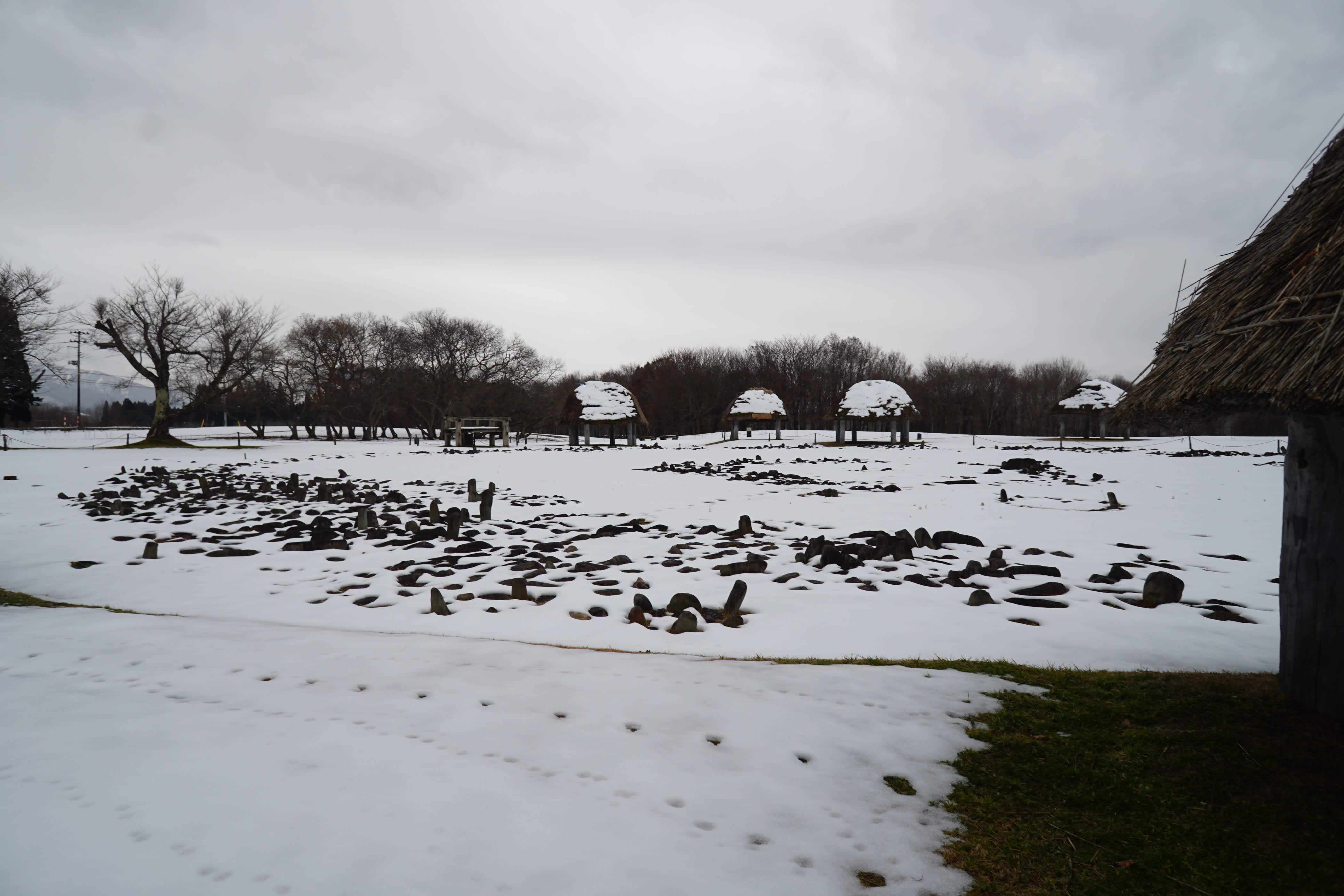
Falling annually on the 21st or 22nd December, the winter solstice marks the shortest day of the year and for the Stonehenge in Wiltshire, it’s a particularly significant date in the calendar. Although its origins remain mysterious, it‘s common knowledge that the iconic British monument was built to align perfectly with the sun on the two solstices. Now you may be thinking: what has Stonehenge got to do with Japan? Well, as showcased at the ongoing ‘Circles of Stone’ exhibition at Stonehenge Visitor Centre, it turns out there’s quite a handful of surprising similarities between our two countries’ deep prehistoric past…

The Japanese Jomon Period
The Jomon Period refers to the earliest historical era of Japanese history that began c.a. 13,000 BCE and ended c.a. 300 BC. The hand-kneaded clay pottery that emerged at the time, distinguishable by impressions made from pressing straw ropes into the earthenware, characterises the era and gives it its name, ‘Jomon’, which is composed of the Japanese kanji for ‘cord’ and ‘art’.

Examples of these unique pots, as well as other rare artefacts, can be seen for the first time outside of Japan at the Stonehenge Visitor Centre in Wiltshire, UK at their ‘Circles of Stone: Stonehenge and Prehistoric Japan’ exhibition.

Like the Stonehenge on Salisbury Plain, remnants of Japan’s Jomon age exist as ancient sites dotted around the country such as the Oyu Stone Circles in Kazuno City, north-eastern Akita, which was recently listed as a UNESCO World Heritage Site. Hirosaki City in western Aomori is also home to the Omori-Katsuyama Stone Circle Ruins, discovered only in the 1950s!

One unexpected Jomon landmark is the giant but adorable statue nicknamed ‘Shako-chan’ that guards the entrance to Kizukuri Station in Tsugaru, Aomori. Though alien-like in appearance, the strange stationmaster is actually a replica of a smaller, one-legged Jomon artefact known as ‘Shakoki Dogu’ that was found in the area in 1887 and is now housed in Tokyo National Museum. Looming 17 metres-tall and with eyes that glow in the dark, Shako-chan serves as the town’s beloved and photogenic mascot!

Prehistoric Japan and the UK
Although there was no contact between Japan and the UK during their coinciding Jomon and Neolithic periods, the rich heritage left behind reveal striking parallels between the two cultures, despite being worlds apart. Not only are the tools and objects made and used at the times alike and reflect the shared complexity and sophistication of the two communities, structures were built also with similar purposes in mind.

As with the timber and stone circles at Stonehenge, there is now evidence to suggest that the Japanese Oyu Stone Circles in Akita were carefully arranged in clusters to align with the sun on the summer and winter solstices. Each cluster is likely to have originally covered a burial, which mirrors how the cremated remains of the dead were placed in and around the monuments at Stonehenge.

The Omori-Katsuyama Ruins in Aomori are also thought to have been constructed in alignment with the midwinter sunset over the nearby Mount Iwaki, a volcano that could easily be mistaken for Mount Fuji in shape.

Japanese Midwinters
As with various other cultures, the winter solstice, or 'toji' in Japanese, is an occasion to celebrate. Stemming from Chinese philosophy, it signifies the turning of the tides between cold and darkness ('yin'), and warmth and light ('yang'), and therefore harmony and the coming of spring.

Familiar to events at Stonehenge, it is believed that Japanese people of the past too gathered at stone circle sites such as the ones in Akita and Aomori prefectures during the solstices. These days, however, people in Japan generally tend to opt for warmer indoor activities, such as eating seasonal vegetables like pumpkins and adzuki beans.

Falling on this citrus fruit's peak harvest season, you'll find that many Japanese people will also mark the midwinter with an indulgent, yuzu hot bath ('yuzuyu'). Not only are yuzu properties believed to have health, beauty and well-being benefits, the bright yellow colour and fragrant smell carry auspicious associations of inviting good fortune and warding off evil spirits. You can therefore find baths filled with yuzu, whole or sliced, at many 'onsen' (hot springs) and 'sento' (public baths) around the country during this time!

Humans aren't the only ones who enjoy this tradition! Since 1982, the zookeepers at Izu Shaboten Zoo in Itto, Shizuoka, have made it a yearly tradition to prepare yuzu baths for their capybaras each winter to counter the dry skin that the animals develop during the cold season.
UK Midwinters

This year, the winter solstice will be marked at Stonehenge on the morning of Thursday 22nd December. To celebrate, the sun rising up to peek between the centre sarsen stones will be streamed live on the official English Heritage YouTube channel here. If you’re lucky to be in the area during the Winter Solstice, you can find more information about the in-person event here.

Visiting the Stonehenge? Be sure to check out the ‘Circles of Stone: Stonehenge and Prehistoric Japan’ exhibition before the 3rd September 2023 which explores in depth the story of the Japanese settlements and stone circles of the middle-to-late Jomon periods!
Otherwise, follow us on Facebook, Instagram or Twitter for more Japan-related news and updates!

















































